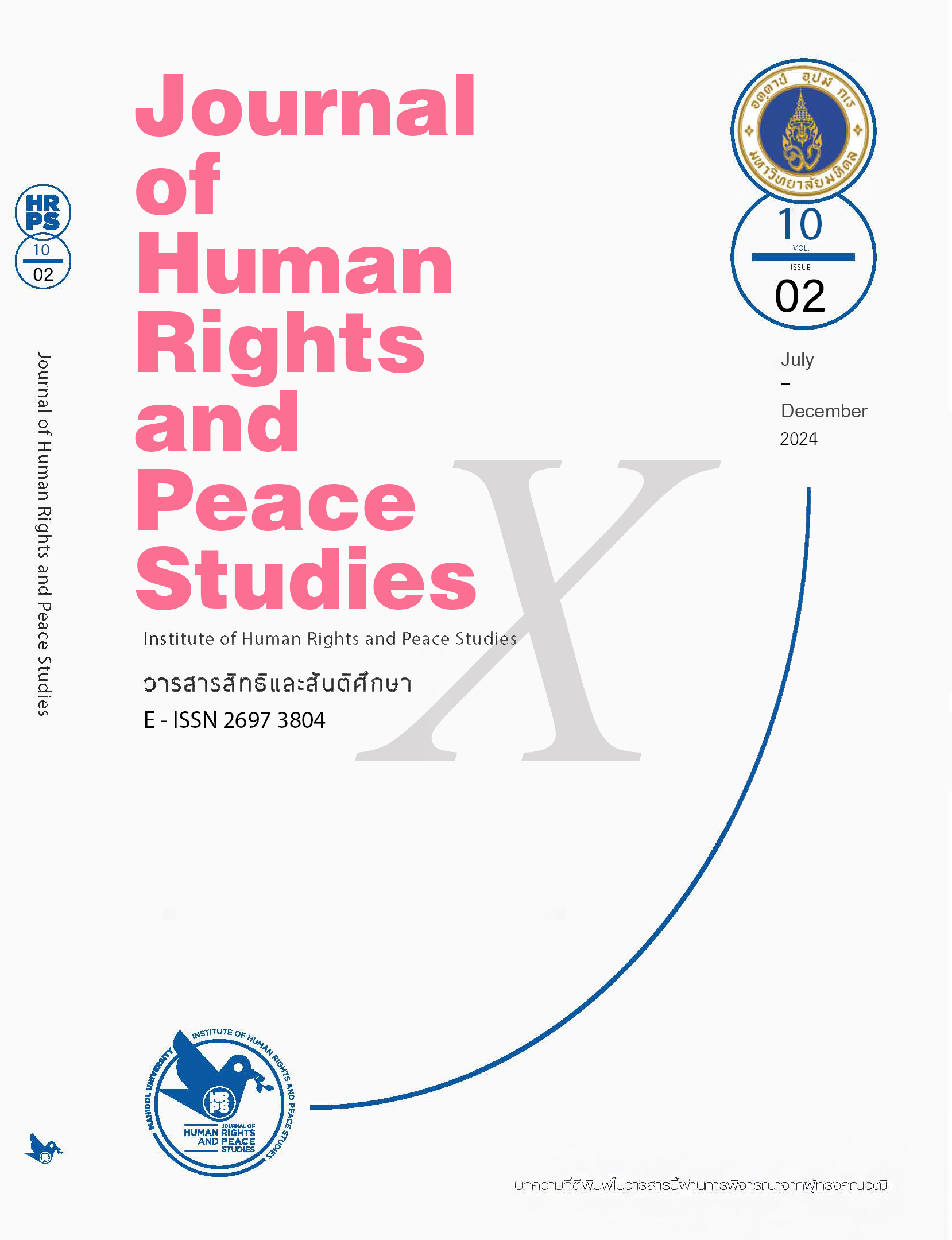The Achievement of Using the Process of Creating Inner Peace through Non-Harming as Buddhist Integration
Main Article Content
Abstract
The research entitled "The Achievement of Using the Process of Creating Inner Peace through Non-Harming as Buddhist Integration" is a study of an Eastern philosophical approach, specifically Buddhism, with the following objectives: (1) to study the meaning of forgiveness (non-harming), Peace, and the relationship between non-harming and inner peace in Theravada Buddhism, (2) to create the process of practicing non-harming for inner peace, and (3) to synthesize the achievement of creating inner peace using the process of non-harming, as Buddhist integration. This research uses action research based on Stephen Kemmis' theory, which is aimed at creating change in individuals. Peace, in Theravada Buddhism, is "calmness," which is peace of mind, stillness, the abandonment of anger, irritability, and delusion; while "Abhaiyadana" (forgiveness) is the intention of "non-harming" oneself and others, which unlocks the unrest within the emotions or mind of the person, thus creating "Inner Peace". Forgiveness as "non-harming," through practice, has a deeper meaning than the usual understanding of "to forgive," which is primarily the intention not to seek revenge. As for the research findings, the achievement of using the process of creating inner peace through non-harming, with 30 people are as follows: (1) Regarding changes of emotions: 26 experienced much change, 3 were not sure, 1 experienced little change; (2) Regarding changes of thoughts and attitudes: 30 experienced much change; (3) Regarding changes in relationships: 25 experienced much change, 3 were not sure, and 2 experienced little change.
Article Details

This work is licensed under a Creative Commons Attribution-NonCommercial-NoDerivatives 4.0 International License.
The views, opinions, and pictures expressed in this journal are those of the authors and do not necessarily reflect the opinions and viewpoints of the editor and the editorial board. All rights are reserved by the authors and the Institute of Human Rights and Peace Studies of Mahidol University. No part of this journal may be reproduced, stored in a retrieval system, or transmitted in any form or by any means without the prior permission in writing from the journal’s editor, or as expressly permitted by law, or under terms agreed with the appropriate reprographics rights organization. Non-commercial use of information in this journal must be properly referenced.
References
Anthokthā phāsāthai chabap Mahachulalongkornrajavidyalaya (Commentary of Tripitaka Mahachulalongkornrajavidyalaya University edition). (1996). Mahachulalongkornrajavidyalaya Press. (In Thai).
Phratraipitka phāsāthai chabap Mahachulalongkornrajavidyalaya (Tripitaka Mahachulalongkornrajavidyalaya University edition). (1996).
Mahachulalongkornrajavidyalaya University Press. (In Thai).
Somdej Phraphuthotkhōsāčhān (P. A. Payutto). (2016). Photnānukromphuthotsāt chabap, pramūantham (Buddhist Dictionary Dhamma compilation edition). Dhamma Sapha Buddhist Press. (In Thai).
Somdej Phraphuthotkhōsāčhān (P. A. Payutto). (2016). Photnānukromphuthotsāt chabap, pramūansap (Buddhist Dictionary glossary edition). Dhamma Sapha Buddhist Press. (In Thai).
Somdej Phraphuthāčhān (`āt `ātphomhāthēn). (2017). Khamphī wisutthimak (The Visuddhimagga: The path of wisdom raise in Theravada Buddhism). Thanapress Press. (In Thai).
Sutthinarakorn, W. (2016). Kānwičhai chœ̄ng patibatkān: Kānwičhai phư̄a sērīphāp læ kānsansarāng (Action research: Research for freedom and creation). Sayamparithat. (In Thai).


